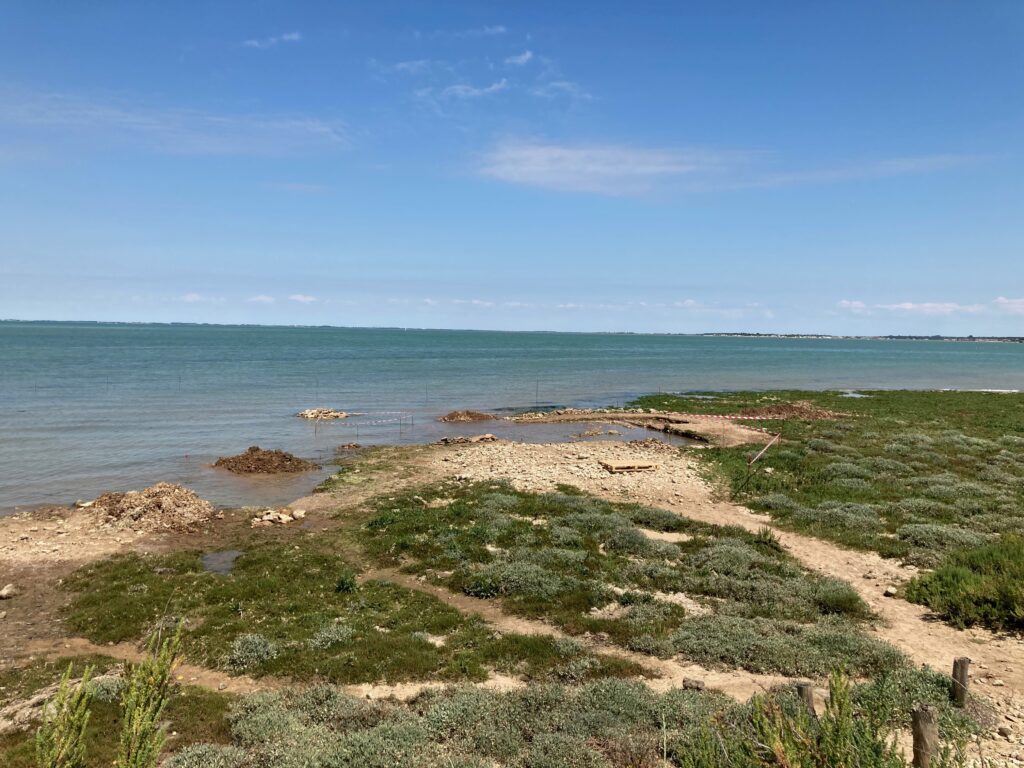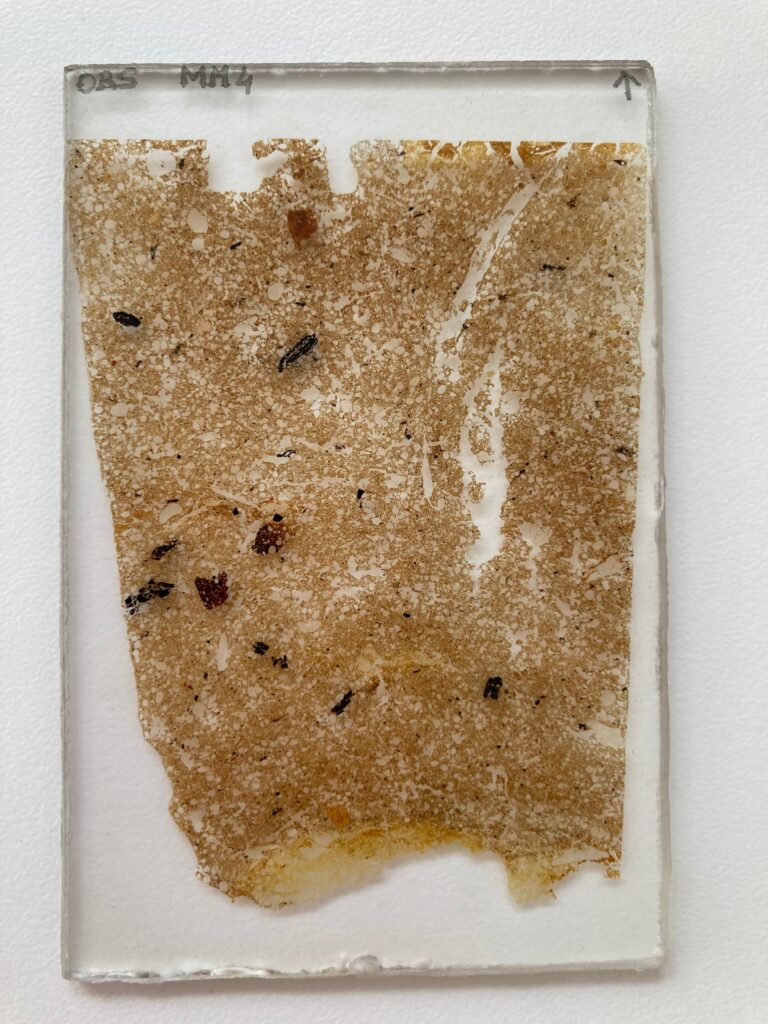Terrascope has manufactured a batch of thin sections from the Neolithic enclosure of Ors, located on the French island of Oléron, on the Atlantic coast. The peculiarity of the site is that it is located on the intertidal zone. The enclosure is excavated as part of a research program directed by Ludovic Soler (Service départemental de Charente-Maritime). The enclosure is partially exposed on the intertidal zone, partially protected by a rip-rap. The last excavation campaigns focused on the understanding of the entrance complex on the shore, with the excavation of the ditches and their surroundings. The investigations revealed the presence of shallow ditches also used for funerary practices as several bodies were found deposited at their bottom. Several phases of occupation can be identified, with the site remaining occupied after the filling of the ditches.
Last June, Sabrina, who is also in charge of the paleo-environmental program on this research excavation, sampled several contexts to help the archaeologists understand the stratigraphy and post-depositional processes at the site. These new investigations will complement the previous studies started in 2019. Samples were taken in several ditches to document their filling, to investigate the role of the human burials, the erosion processes and the occupation and abandonment layers recovering the ditches. Some samples were also taken outside of the ditches, in occupation layers and areas potentially disturbed by previous excavations from the 1960’s which we have difficulties to locate.
The thin sections are now ready for micromorphology analysis by Dr Rowena Banerjea (University of Reading). These samples are always tricky to prepare as the sediment is very clayey and does not impregnate very well. But we managed to make nice slides and we are looking forward to read about the results of this new campaign of micromorphological investigations.
Follow us on Instagram! Contact us for a quotation.












